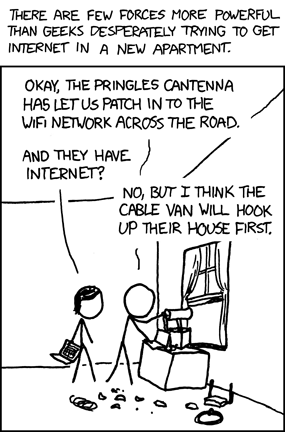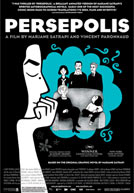Whew, it’s been awhile since my last post…
So I was bored at work so I was reading random comic strips and landed on this Unshelved comic strip: Graphic Novels
After reading the strip, I thought to myself… does “graphic” in graphic novels refer to the fact it’s violent/sexual? I always thought graphic refer to the fact it contained pictures, a term to distinguish between comic book issues and graphic novels, which were more like books telling a full story.
According to Merriam-Webster, graphic is defined as: marked by clear lifelike or vividly realistic description
I confirmed with Ungsunghero that it does in fact mean graphic violence/sex. He said the term that means what I’m thinking are more along the lines of illustrated novels or picture books.
However, Wikipedia states there’s apparently some ambiguity in regards to this term:
A graphic novel is a type of comic book, usually with a lengthy and complex storyline similar to those of novels, and often aimed at mature audiences. The term also encompasses comic short story anthologies, and in some cases bound collections of previously published comic book series (more commonly referred to as trade paperbacks).
…
The evolving term graphic novel is not strictly defined, and is sometimes used, controversially, to imply subjective distinctions in artistic quality between graphic novels and other kinds of comics. It suggests a story that has a beginning, middle and end, as opposed to an ongoing series with continuing characters; one that is outside the genres commonly associated with comic books, and that deals with more mature themes. It is sometimes applied to works that fit this description even though they are serialized in traditional comic book format. The term is commonly used to disassociate works from the juvenile or humorous connotations of the terms comics and comic book, implying that the work is more serious, mature, or literary than traditional comics. Following this reasoning, the French term Bande Dessinée is occasionally applied, by art historians and others schooled in fine arts, to dissociate comic books in the fine-art tradition from those of popular entertainment, even though in the French language the term has no such connotation and applies equally to all kinds of comic strips and books.
In the publishing trade, the term is sometimes extended to material that would not be considered a novel if produced in another medium. Collections of comic books that do not form a continuous story, anthologies or collections of loosely related pieces, and even non-fiction are stocked by libraries and bookstores as “graphic novels” (similar to the manner in which dramatic stories are included in “comic” books). It is also sometimes used to create a distinction between works created as stand-alone stories, in contrast to collections or compilations of a story arc from a comic book series published in book form.
Just more food for thought.
Speaking of comics, did you see today’s xkcd: Moving
Did I ever tell you that I paid an extra month of rent to stay at my old place, just so that by the time I’ve moved in, my new place was internet ready? I had scheduled an appointment with Comcast and you know that always takes like a week or 2. So after I confirmed internet was working, I requested help from friends to help me move. While helping me move, they also noticed that I had a cable modem on the floor with blinking green lights.


 So I watched Persepolis (
So I watched Persepolis (